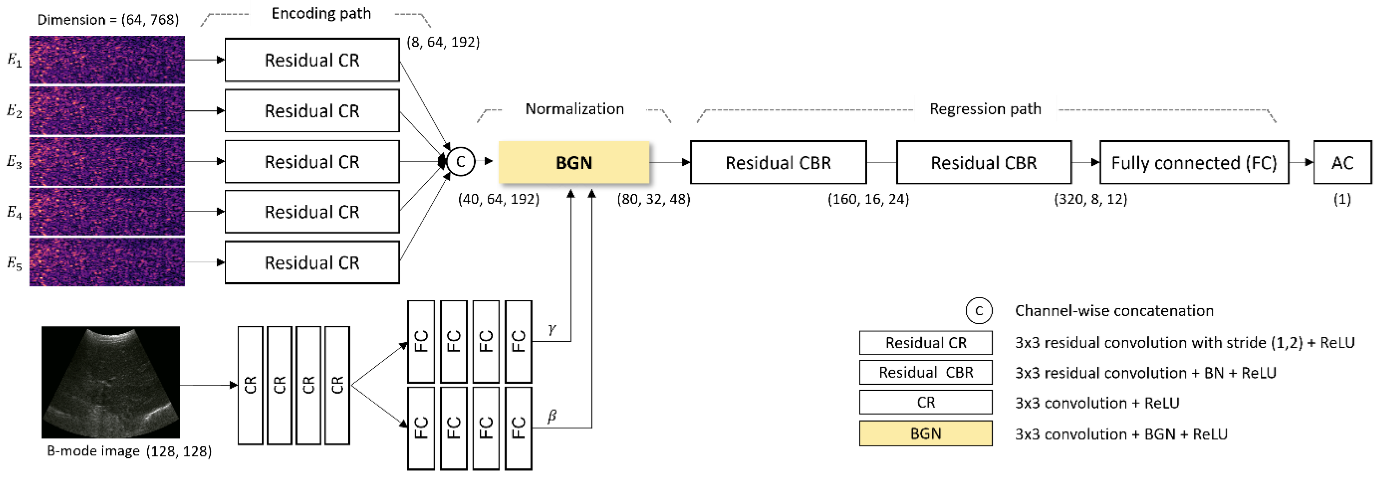Hyuksool Kwon*, Myeong-Gee Kim*, Seok-Hwan Oh, Youngmin Kim, Guil Jung, Hyeon-Jik Lee, Sang-Yun Kim, Hyeon-Min Bae, “Application of Quantitative Ultrasonography and Artificial Intelligence for Assessing Severity of Fatty Liver: A Pilot Study, Diagnostics”, Diagnostics, Feb. 2024.
Abstract: Non-alcoholic fatty liver disease (NAFLD), prevalent among conditions like obesity and diabetes, is globally significant. Existing ultrasound diagnosis methods, despite their use, often lack accuracy and precision, necessitating innovative solutions like AI. This study aims to validate an AI-enhanced quantitative ultrasound (QUS) algorithm for NAFLD severity assessment and compare its performance with Magnetic Resonance Imaging Proton Density Fat Fraction (MRI-PDFF), a conventional diagnostic tool. A single-center cross-sectional pilot study was conducted. Liver fat content was estimated using an AI-enhanced quantitative ultrasound attenuation coefficient (QUS-AC) of Barreleye Inc. with an AI-based QUS algorithm and two conventional ultrasound techniques, FibroTouch Ultrasound Attenuation Parameter (UAP) and Canon Attenuation Imaging (ATI). The results were compared with MRI-PDFF values. The intraclass correlation coefficient (ICC) was also assessed. Significant correlation was found between the QUS-AC and the MRI-PDFF, reflected by an R value of 0.95. On other hand, ATI and UAP displayed lower correlations with MRI-PDFF, yielding R values of 0.73 and 0.51, respectively. In addition, ICC for QUS-AC was 0.983 for individual observations. On the other hand, the ICCs for ATI and UAP were 0.76 and 0.39, respectively. Our findings suggest that AC with AI-enhanced QUS could serve as a valuable tool for the non-invasive diagnosis of NAFLD.